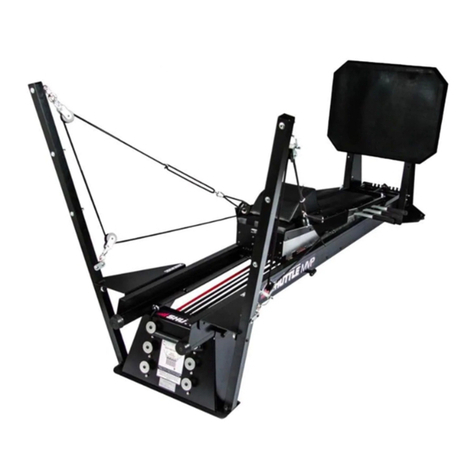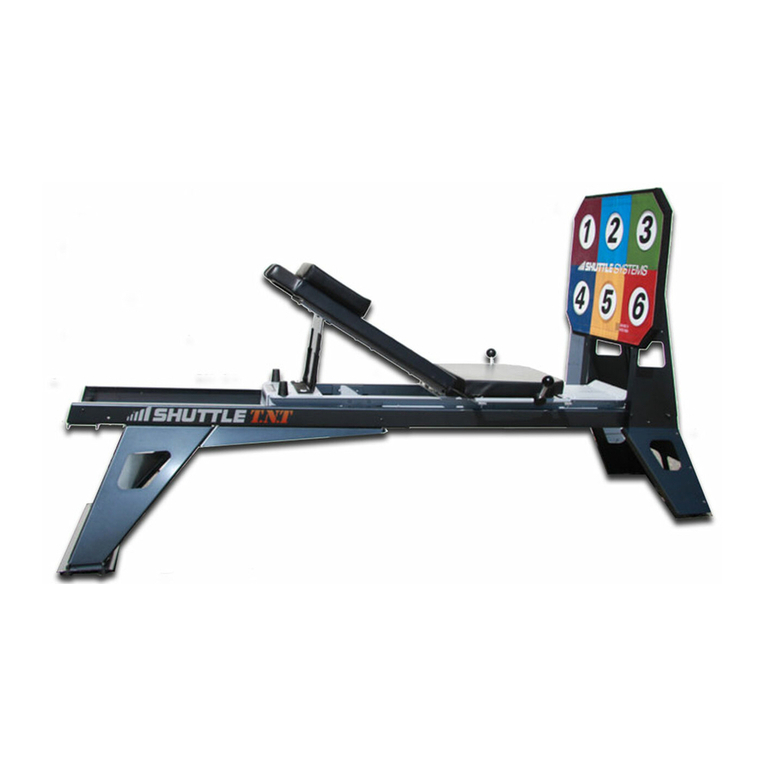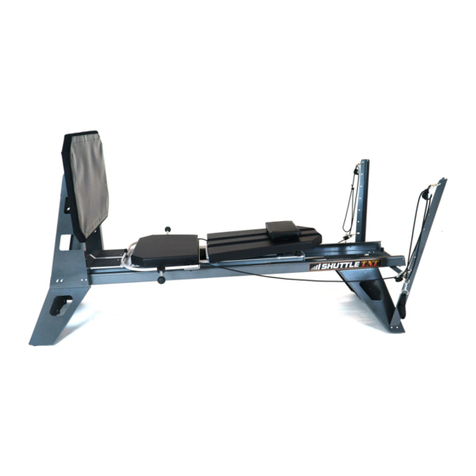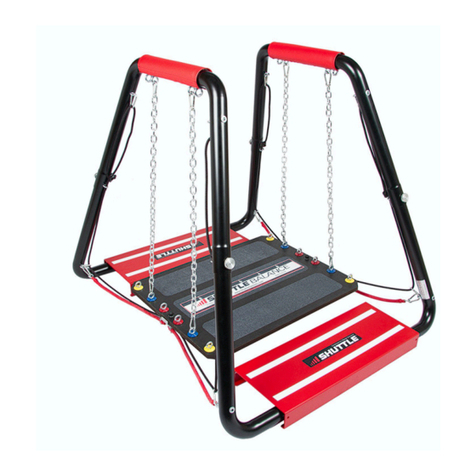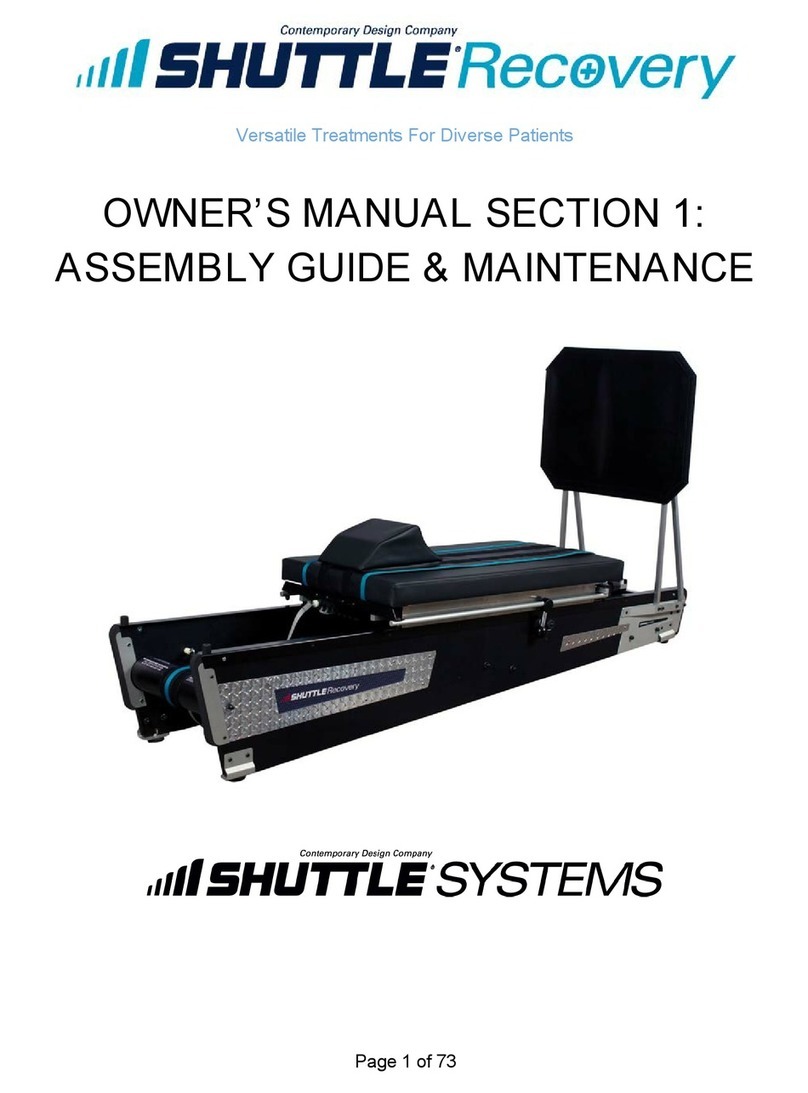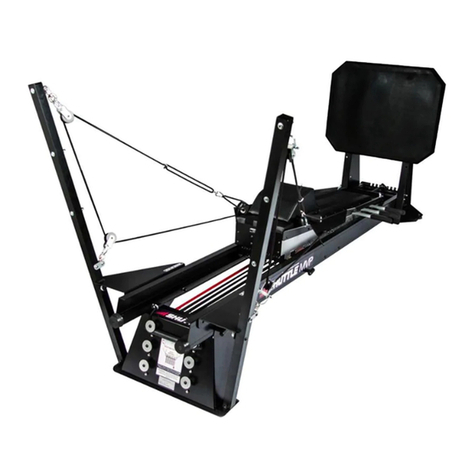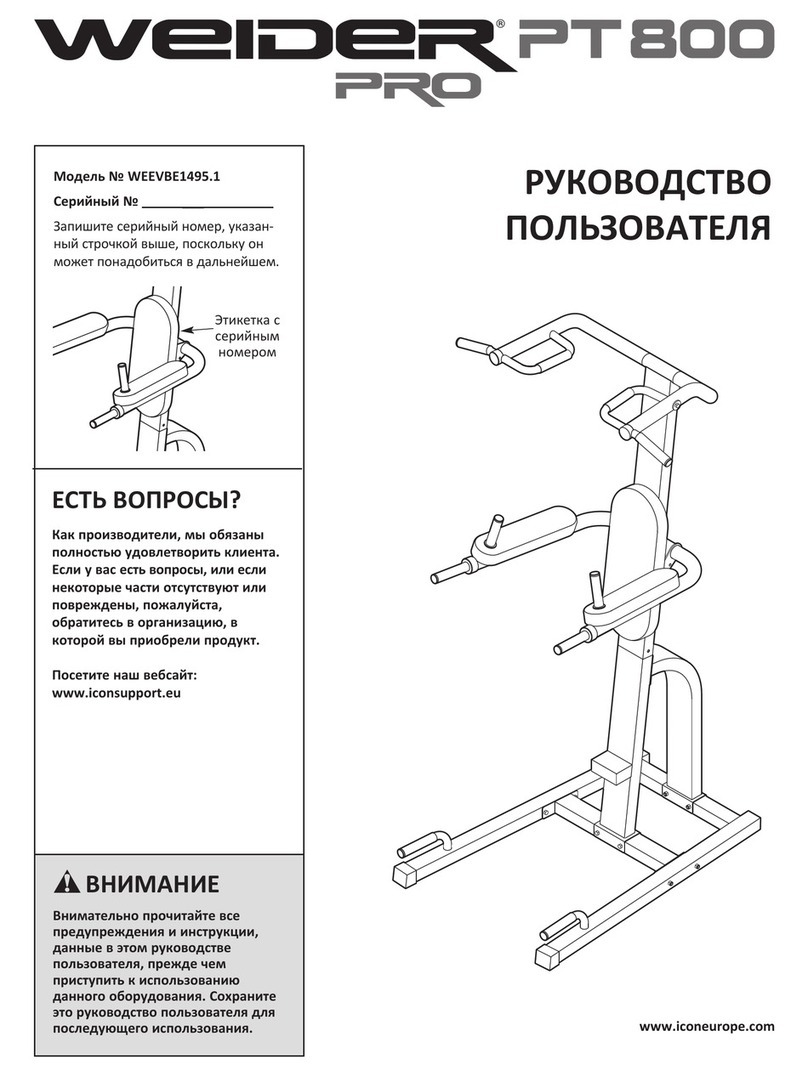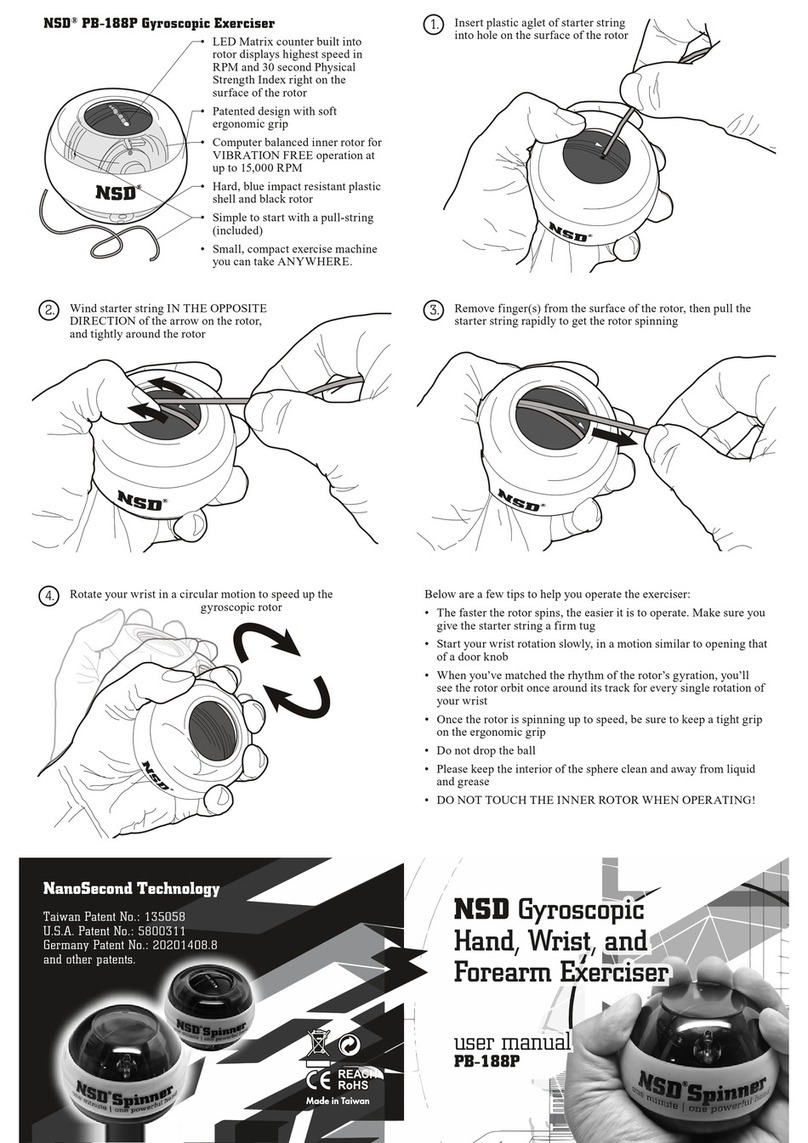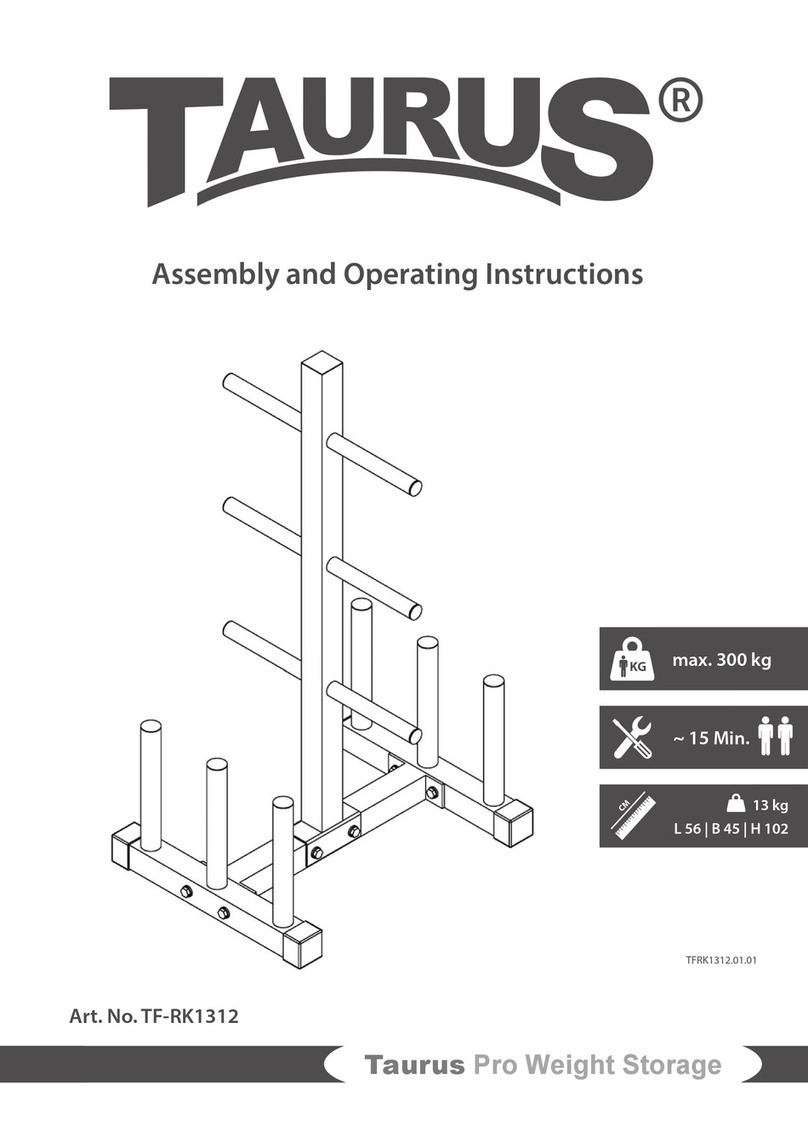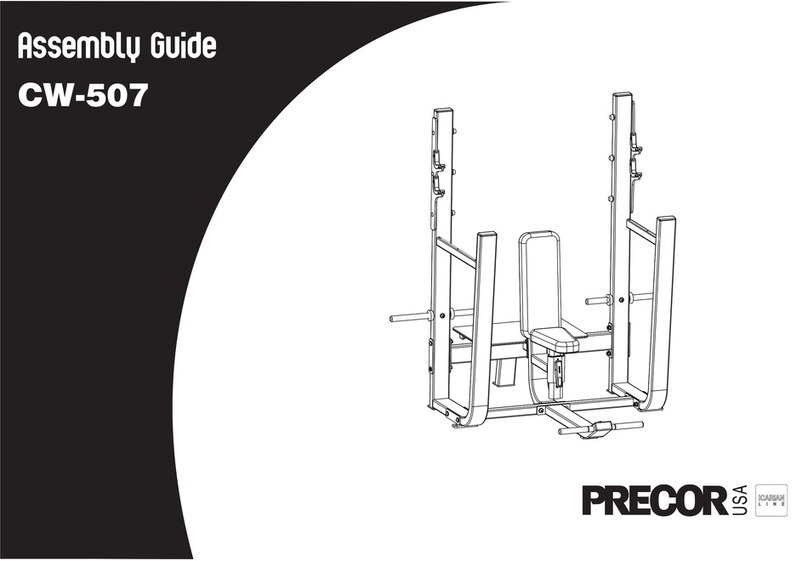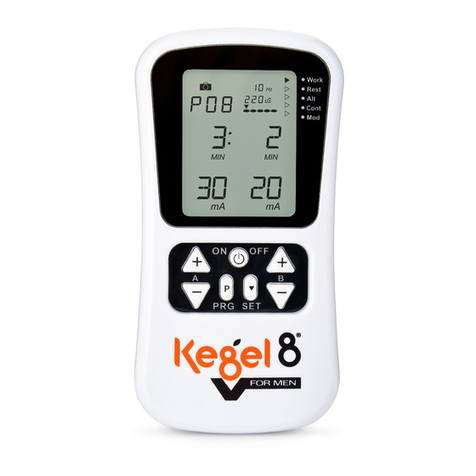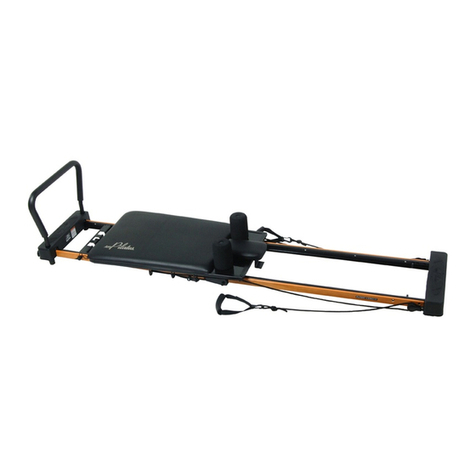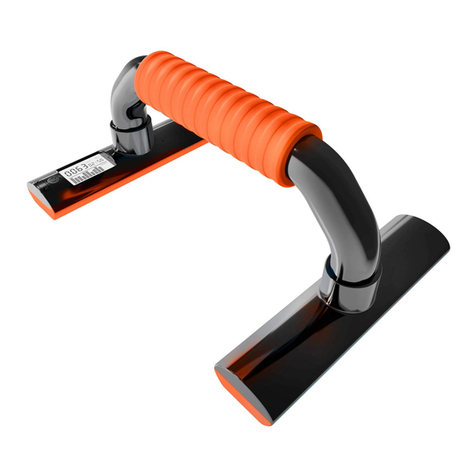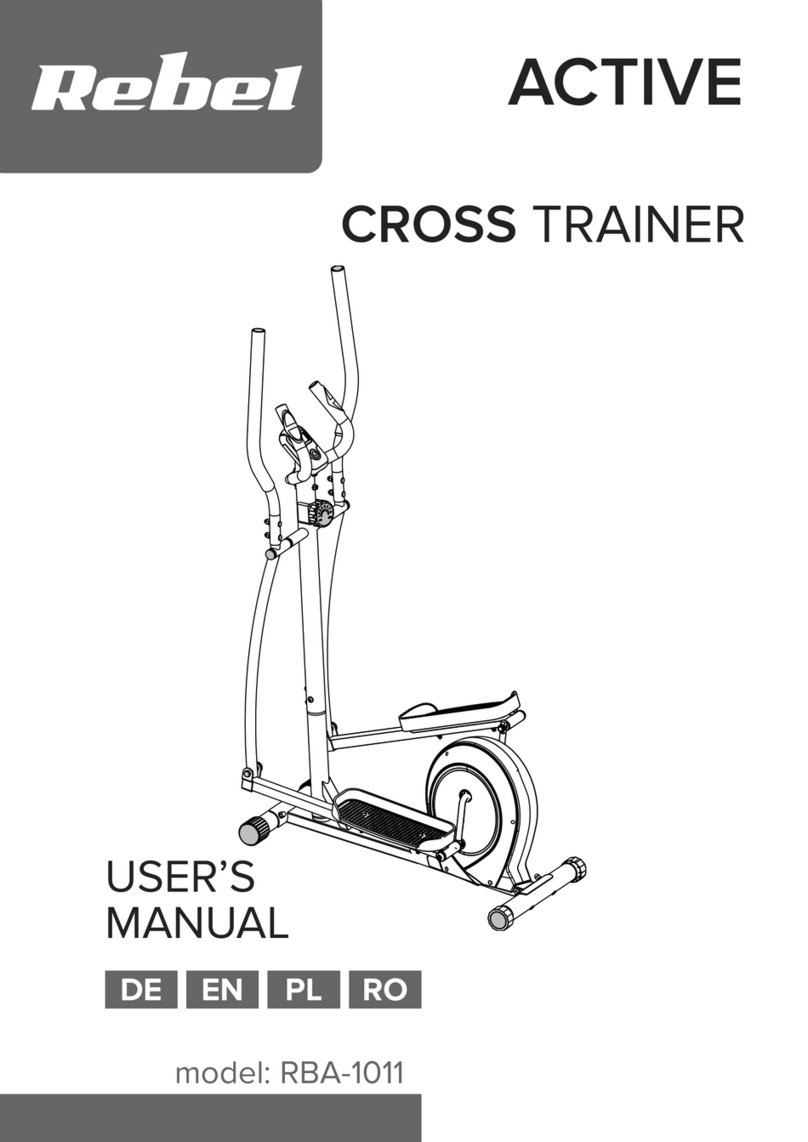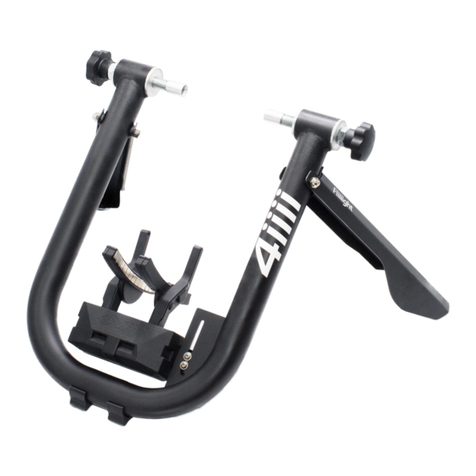
II. UNDERSTANDING YOUR SHUTTLE
MINIPRESS
The heart of the Shuttle MiniPress is the method employed to add resistance to the Carriage.
The components of this system are the Elasticord Hook-Up Plate, a set of pulleys, and six
Elasticords. Each Elasticord fits in a slot in the Carriage. The user grasps the Elasticord knob
protruding from the Carriage, pulls it out and inserts the knob in the corresponding slot in the
frame. The user also selects the number of Elasticords to reach the desired load. When
engaged, these Elasticords provide the desired resistance. The five black Elasticords provide
about 7 lbs of starting load each. The red Elasticord has a beginning resistance of about 2 lbs. At
full stroke, the black Elasticords provide about 20 lbs of resistance each and the red, about 5 lbs.
Thus, the load capacity of the MiniPress Elasticord Resistance System ranges from 2 lbs to
approximately 100 lbs at full extension.
The Shuttle MiniPress has a wide range of possibilities. Because the unit is lightweight and
portable, desired degrees of flexion and extension are easily established by varying the position
of the patient and the distance between the unit and the patient.
For example, a patient will have greater flexion at the knee if they use the MiniPress while seated
in a chair, or lying in a supine position in bed or sitting flexed at the hip on a treatment table. Use
of a goniometer will ensure an accurate flexion angle measurement and documentation of
improvement.
Increasing the number of Elasticords allows the practitioner to add small incremental loads to
enable low to moderate levels of muscle and joint strengthening. In addition, the Elasticords
allow for both concentric and eccentric muscle loading.
Unlike many closed chain devices, the Shuttle MiniPress has the advantage of being used as a
progressive form or "active CPM”. For example, with minimal friction provided by the wheels as
they roll on the aluminum track, the recovering leg can be propelled on the Footplate by the
active leg. Gradually, the healthy limb exerts less pressure and the affected limb is called upon to
do more work, thus requiring increased active muscle firing and recruitment patterns to improve
the neurological feedback from the injured limb.
LATEX WARNING!
Elasticords are made of natural latex. Some people have an allergic reaction to latex.
The MiniPress is constructed so that the Elasticords can be moved and adjusted without
direct contact with the latex. We recommend using glov es when maintaining the
MiniPress.
Page 8
